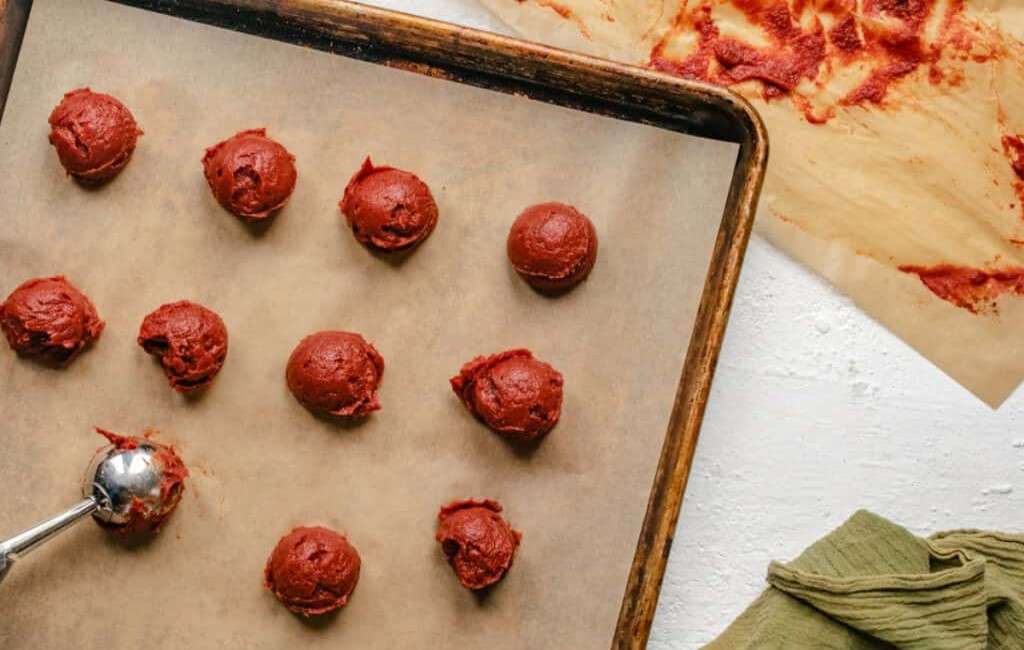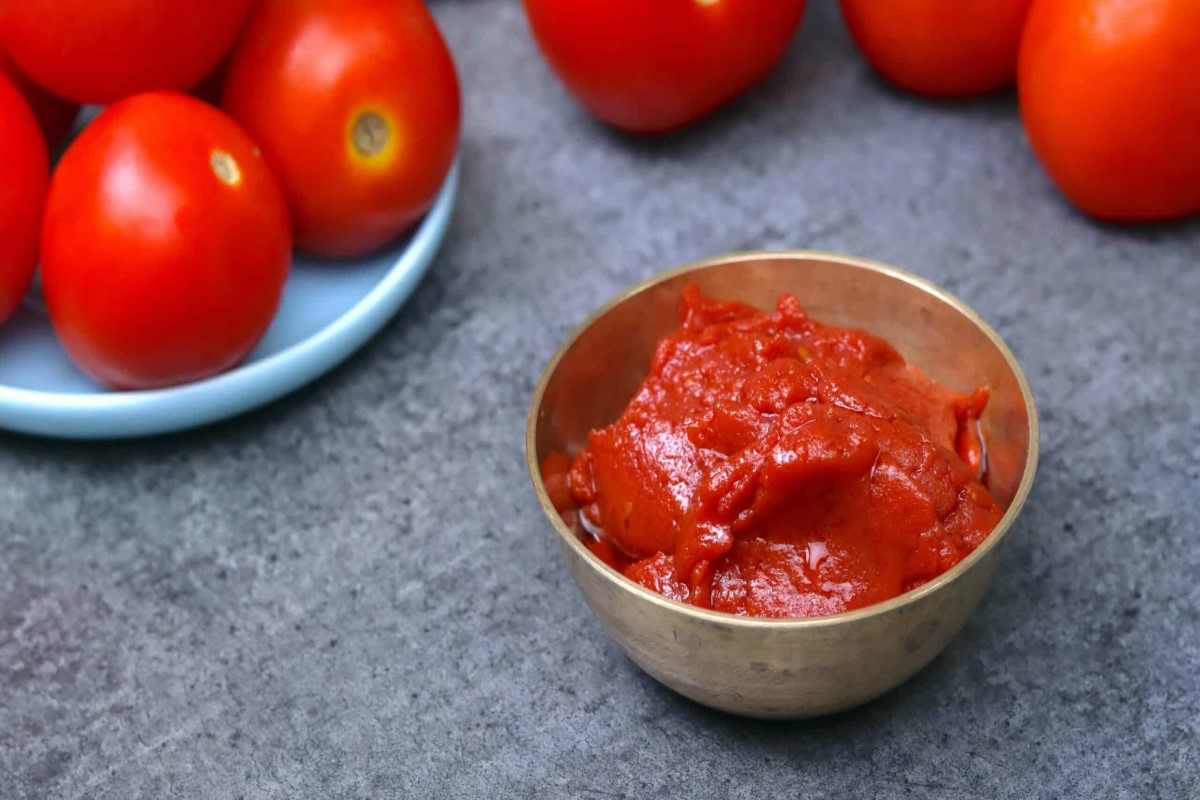Frying tomato paste in oil, particularly olive oil is a traditional way to keep tomato paste away from mold and any other destructive factors.
It can be frozen in the freezer to last longer when you open a canned tomato paste and you don`t need the rest of it. When we first begin using a new jar of tomato paste, we typically just require one to two teaspoons of tomato paste to get things going.
The question that arises at this juncture is, what actions should you take to make the remaining tomato paste last for a longer period of time?
What steps may be taken to ensure that the product does not become tainted with mold and consequently needs to be discarded?
Freezing tomato paste is a great way to store an opened can of tomato paste, and in this section, I will share with you the most successful methods for freezing tomato paste.

Freezing tomato paste is a wonderful method for keeping an opened can of tomato paste. In certain recipes, the savory and fragrant tomato paste is an essential ingredient that must be omitted under any circumstances.
It imparts on foods the distinctive flavor and aroma of fresh tomatoes, which are only available during the summer months.
Tomato paste is sold in many different containers, such as large glass jars, tin cans, TetraPak packets, and so on. You can obtain it in any of these and more. You have access to a wide range of options from which to select.
The fact that it is possible to save money by purchasing tomato paste in very large quantities is what’s at the root of the issue.
Even if you keep the can of tomato paste in the refrigerator, you only have five to seven days after opening it to consume it before it goes bad.
This is true even if you store it for longer than that. When kept in the refrigerator, an unopened tube of tomato paste has a maximum shelf life of forty-five days. This is the longest period of time that it may be kept.
If you are like me and do not want to eat the same recipes or dishes that are similar during this period, you have a better option available to you, which is to preserve tomato paste at home.
If you do not want to eat the same recipes or dishes during this period, you can preserve tomato paste at home.
Tomato paste that has been opened should be stored in the freezer because this is the most effective approach to keep it from going bad before it can be used again.
Additionally, tomato paste is a good candidate for freezing. The method of freezing anything in stages is one that requires very little explanation.
Determine first what amount of tomato paste will work best for the meals you plan to make with it and write it down.
The remaining amount of tomato paste should then be measured out, placed on a plate that has been lined with parchment paper, and frozen. That brings us to the end.

Nevertheless, there are a few idiosyncrasies that come along with the procedure that you need to keep in mind: Be sure to allow some room between each dollop of tomato paste to prevent the individual parts from becoming adhered to one another.
Place the dish in the freezer for somewhere between two and three hours, taking care to keep the tomato paste portions on the plate distinct from one another.
The amount of tomato paste that is used has an effect that is proportionate to the length of time that must be spent.
When you can see that the tomato paste has frozen into a solid state, place the dollops of tomato paste in a bag that may be stored in the freezer for use at a later time.
Tomato paste may be frozen in a number of different containers, such as ice cube trays, molds made of silicone, ceramic, or metal, and canisters made of metal.
For this reason, you can utilize any container that has the capability of being partitioned into separate pieces.
Make sure you write the date on the container of tomato paste before you freeze it. The paste can be stored in the freezer for no more than three months at a time. After the tomato paste has been defrosted, you should make every effort to keep it from being frozen again.
The flavor of tomato paste will lose some of its appeal if a certain component is missing. You put the integrity of the product, as well as the overall safety of the dish, at jeopardy when you do this.
If you do not want to spend time separating tomato paste into individual servings before freezing it, you always have the option of freezing tomato paste in its entirety. This is an alternative that is available to you.
On the other hand, I find that it is pretty irritating to make use of it whenever it is necessary. When I try to remove the appropriate quantity of frozen tomato paste from the can, it is quite difficult.

Putting any remaining tomato paste into pre-measured amounts and then freezing it is the most time and space efficient way to store it.
Because tomato paste is typically added to the pan with vegetables that are being sautéed or to the pot with liquid that is boiling, you do not even need to defrost it before using it because you add it in these ways.
In fact, you do not need to defrost it before using it because you add it in these ways.
You are able to make use of it in its current form directly from the freezer. When you first open a jar of tomato paste, it may bring to mind one of those challenges that are featured on the television show Chopped.
If I used this tomato paste in as many different ways as possible before it went bad and I had to throw it away, how many do you think I could come up with?
Instead of buying tomato paste in cans, I usually opt to buy it in glass jars since I don’t want to expose myself to the potential health hazards that are connected with BPA linings.
Because of this, the total cost will be somewhat increased. To be really honest, this is not a very significant expenditure of dollars at all.
However, the circumstance is still one in which I would prefer to avoid wasting food if at all possible. I’m going to put the paste to use in a number of different meals, including stews and chili.
But the majority of the time, I find that the conflict with the tomato paste ends with me in a position of defeat. While the tomato paste is flushed away, the glass is collected so that it might be reused in the future.
After I had through cooking the creamy vegan tomato soup, I decided it would be a good idea to attempt one of the tomato paste remedies I’d heard over the years, which was to freeze the tomato paste.
I had read that this was supposed to help preserve the tomato paste for longer.

In the past, I have focused a significant amount of my energy on achieving this goal. But it always sounded like it would take a considerable lot of time, so that was a concern. I was absolutely and utterly incorrect about everything!
In terms of the actual amount of time that was spent working on it, the task was completed in a very short amount of time. I was able to restore some of the space in the freezer with some creative organization.
Following that, I got a baking dish ready for use by lining it with a piece of parchment paper.
After scooping out sections of the tomato paste with a utensil designed for measuring tablespoons, I formed those pieces into balls to make cookies with a flavor that is comparable to that of a red tomato.
After that, I placed the sheet in the freezer for a few minutes, until the consistency of the paste patties became more stable. After that, I removed the sheet from the freezer.
After each piece had finished completely freezing on its own after being allowed to do so, I simply transferred the solid tomato paste patties into a container made of glass.
This was done after each portion had been left to do so. I used a permanent black marker to write on the exterior of the glass so that I would never forget what was on the other side of the glass. This will ensure that I never forget.
Now, if I find a recipe that calls for tomato paste, I have a few different options to choose from in its place. It is possible for me to take a piece that has been frozen and defrost it ahead of time so that I can use it in the same way that I would normally use it.
If you are creating soup or chili, you can rapidly include the frozen tomato paste into the meal by adding it to the pot and allowing it to melt in the hot liquid.
This allows you to incorporate the tomato paste into the dish without having to defrost it first.
This is a straightforward approach to integrating tomato paste into the dish.

Or, if it’s a blended soup (and your blender can handle frozen components well), I can simply toss them in the blender with the rest of the ingredients and puree them until they are completely smooth.
Alternatively, if it’s a blended soup, I can simply toss them in the blender with the rest of the ingredients and puree them until they are completely recent events inspired me to prepare another batch of tomato soup in my kitchen and I did so using the same recipe.
In addition, taking some tomato paste out of the freezer and putting it to use was a straightforward and uncomplicated process. All that was required was a couple of teaspoons.









Your comment submitted.